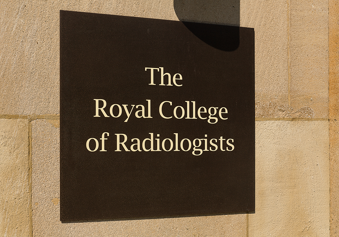Introduction
This is a national project on behalf of the RCR Clinical Oncology Quality Improvement and Audit Committee (COQIAC). We are extremely grateful in advance for your time and effort in helping us re-audit current patterns of practice for prostate brachytherapy.
The questionnaire typically takes around 15 minutes to complete and no patient/casenote data collection is required. (If your department does not deliver prostate brachytherapy there is a very short questionnaire which will take less than 5 minutes, so please still complete the audit.)
All the questions refer to your departmental practice in the calendar year 2021.
Background
In 2012, The Royal College of Radiologists (RCR), in association with the UK and Ireland Prostate Brachytherapy Group, published guidelines giving the first national treatment standards for prostate brachytherapy in the UK and Ireland. An RCR audit of prostate brachytherapy in 2012 provided an overview of national practice in the year before the publication of the guidelines. This allowed us to show a baseline prior to the introduction of the standards.
Performing the current audit will allow us to examine the impact of the guidelines on practice. The timing of this project will also allow us to see how published research since 2012 has affected patterns of practice and also what impact the Covid-19 pandemic may have had on service delivery.
Aims
This audit aims to benchmark national delivery of brachytherapy in prostate cancer against national and international standards and to identify potential for improvement.
Audit standards (Target 95%)
- Each department should perform at least 25 cases/year.
- Each clinical oncologist should perform at least 25 vLDR cases/year.
- Dose prescribed for vLDR should be 145 Gy for monotherapy and 110 Gy for boosts.
- Dosimetric parameters should be collected as per PROBATE guidance, with individual doses to be listed.
- Post-implant dosimetry should be performed.
- Dose to organs at risk should be assessed, with individual organs listed.
- Patients should receive V100 ≥80% for vLDR brachytherapy.
- Patients should receive D90 of 90% for vLDR brachytherapy.
- Rectal D2cm3 should be below treatment dose.
- CT:USS ratio should be ≥0.9.
- Toxicity data to be collected.
- Peer review of brachytherapy service within the last 3 years.
- Dose prescribed for HDR brachytherapy should be 26Gy/2# or 19Gy/SXT for monotherapy and 15Gy/SXT for boost.
- Patients should receive D90 of >/= 100% and V100 of >/= 95% for HDR brachytherapy.
If you have any queries about any aspect of the audit, please contact [email protected].
Dr Alex Stewart and Dr Amarnath Challapalli, Project Leads
On behalf of the Clinical Oncology Quality Improvement and Audit Committee (COQIAC), Royal College of Radiologists
